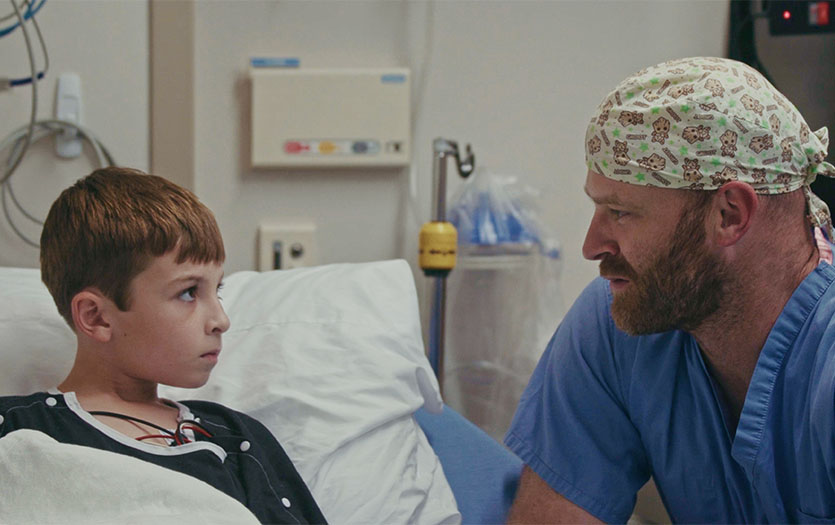Preparing a child for surgery can be a stressful experience, for both the child and their caregiver. At Parkview, the surgery team has designed the process to be as smooth, comforting and informative as possible. This detailed guide outlines what families can expect before, during and after pediatric surgery, helping both children and their grownups feel more confident and relaxed on the big day. We also encourage parents to watch this video with their child to help ease their fear around the unknowns.
A warm welcome and easy check-in
Families check in at the front desk, where the receptionist provides the child’s grown-up with a special bracelet containing the child’s name to ensure they stay connected throughout the hospital visit.
To help ease nerves, children are encouraged to bring along their favorite comfort items, such as a stuffed animal or blanket, as well as books, toys or games to pass the time in the waiting room.
Pre-op steps
When it's time, a nurse will call the child's name and escort them, along with their grown-up, back to be measured for height and weight, which helps the medical team determine the right amount of medication for them. A thermometer will measure the child's temperature across the forehead and ear.
Once in the pre-op room, the child is given a matching bracelet to their grown-up, reinforcing the hospital’s commitment to safety and connection. Next, the care team will check the patient’s blood pressure measurement using a cuff that feels like a soft squeeze, oxygen level with a pulse oximeter placed on the finger, and heart and lungs through a stethoscope that may feel cool on the skin.
Children then change into “special pajamas” (a hospital gown) to help keep the surgery area clean and sterile.
Meeting the surgical team
Throughout the process, the patient will meet caring doctors and nurses who explain what’s happening and answer any questions. One of these introductions is to the anesthesiologist, the doctor who gives the “sleepy air” to help the child rest during surgery. This doctor carefully calculates the right amount of anesthesia based on the child's age, height and weight.
Most children sleep peacefully through the entire procedure and may even remember a dream when they wake up!
Heading to the operating room
When it’s time for surgery, the child will say goodbye to their grown-up. The caregiver then waits in a special family room nearby. Children are allowed to bring their favorite blanket or stuffed animal into the surgery room for extra comfort.

In the operating room, the environment is clean and cold, with bright lights, computers and staff dressed in blue surgical outfits. A nurse helps the child onto a special bed, and the team gets everything ready.
They will put sticky monitoring pads on the patient’s chest to watch the heart, as well as a blood pressure cuff and pulse oximeter. A green balloon on the mask inflates as the child breathes in the “sleepy air” and falls asleep gently while the medical team keeps close watch.
Waking up
After surgery, the child wakes up in the Post-Anesthesia Care Unit (PACU), or “wake-up room.” A nurse is there to ask how they’re feeling and ensure comfort. A tiny IV straw with a clear bandage may be in place on the hand to provide quick medicine if needed. Once the child is awake, their grown-up is allowed to join them.
The child is then offered water or a popsicle if they feel ready. Once they’re able to drink and feel more alert, it’s time to prepare for going home.
Heading home after surgery
The nurse gently removes the IV and replaces it with a bandage. Then comes one of the most exciting parts for many kids: a ride in a wheelchair to the front door, where their grown-up is waiting in the car. No walking necessary!
Once home, the most important job is rest. Children may feel sleepy for the rest of the day, and that’s completely normal. With proper care, most kids bounce back quickly from their procedure.
For more information about our pediatric specialties, call 260-266-5400.
